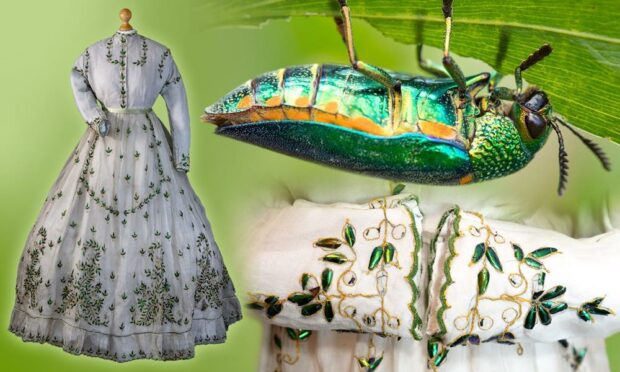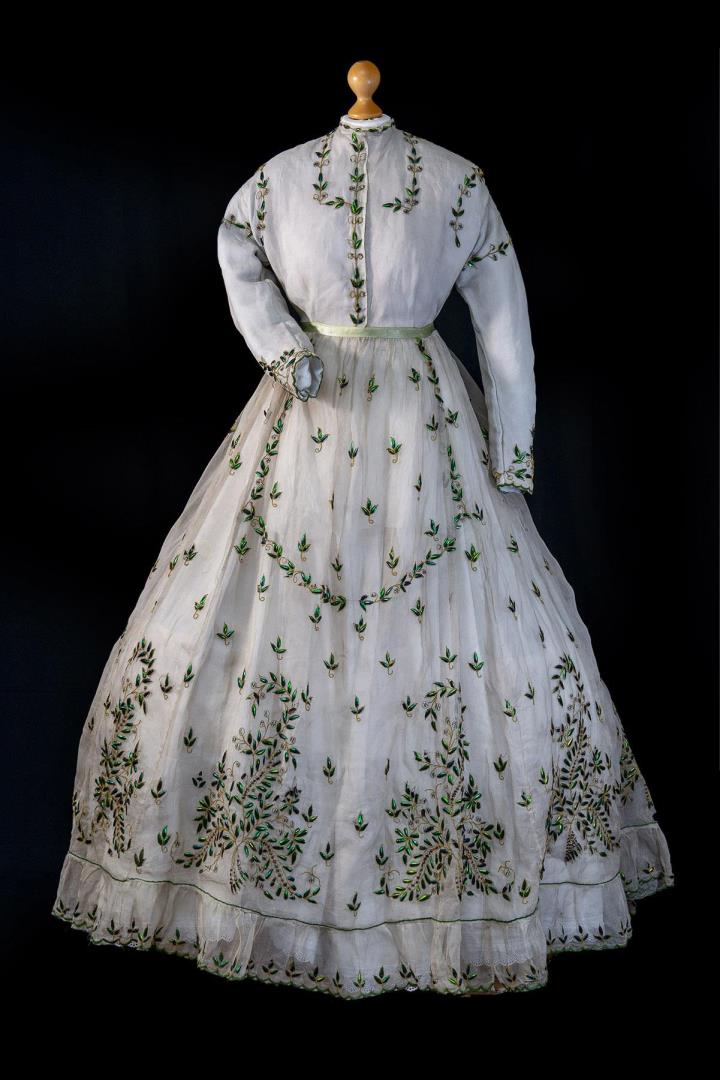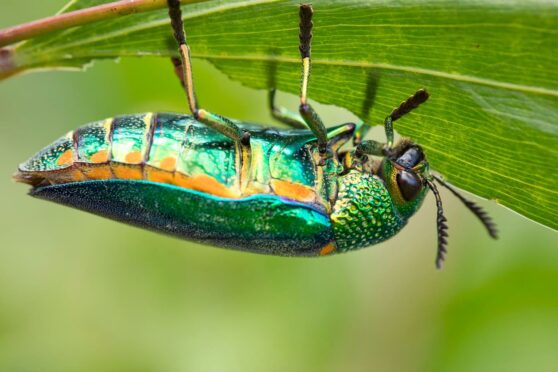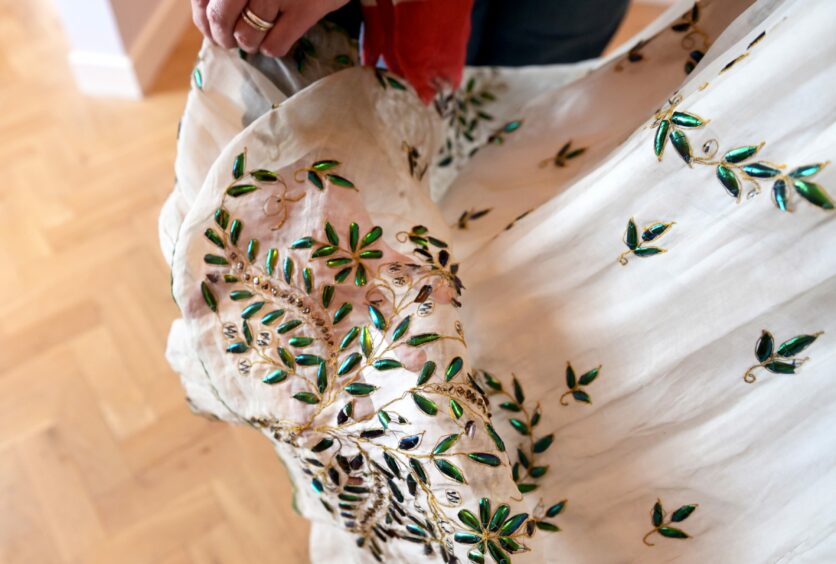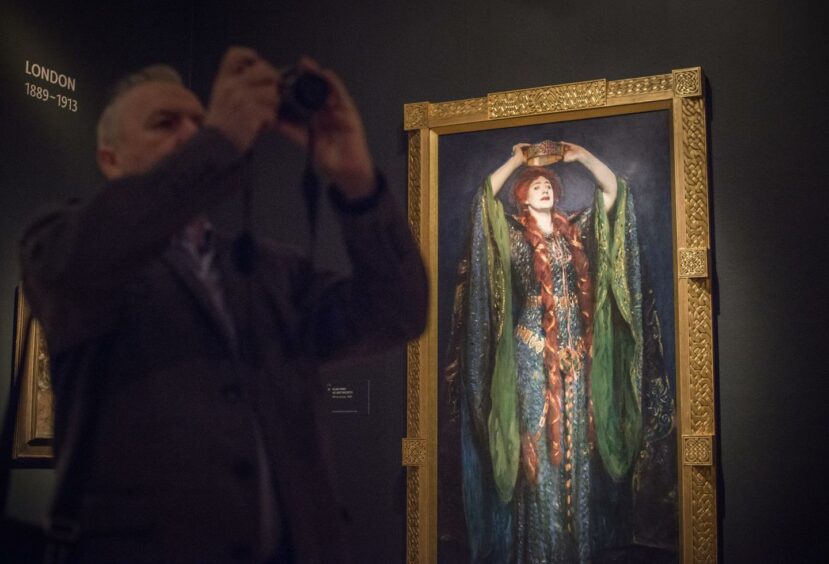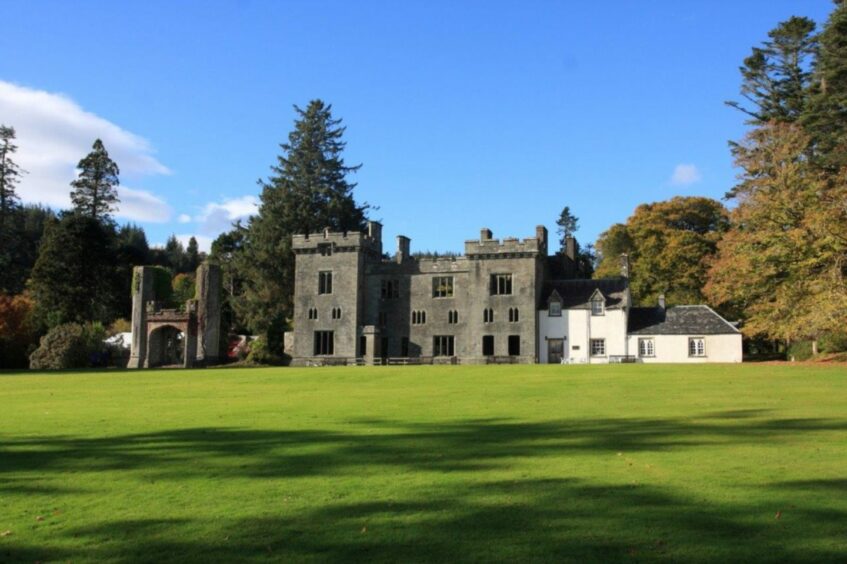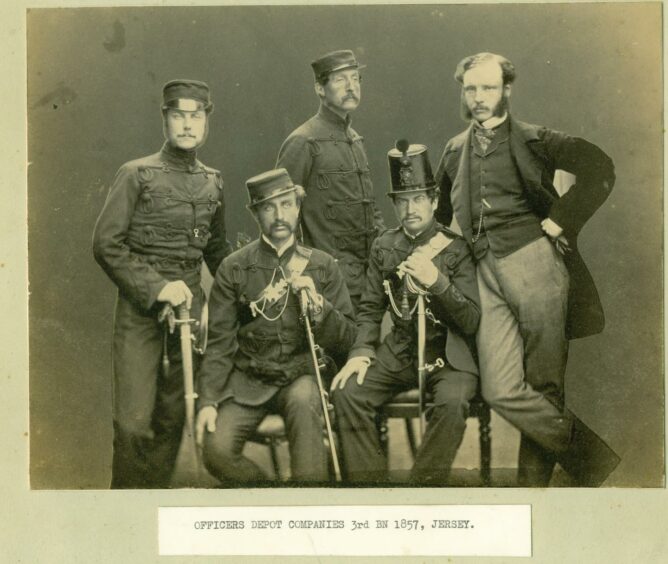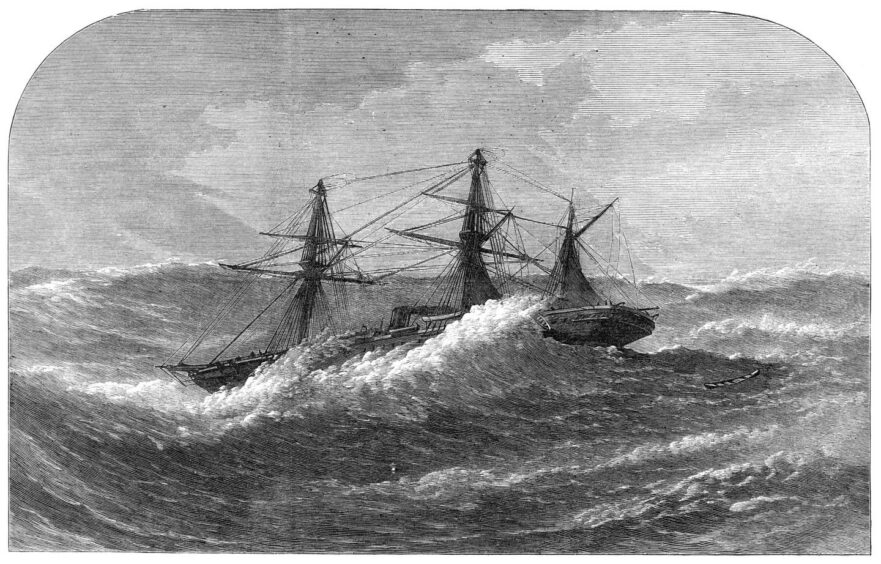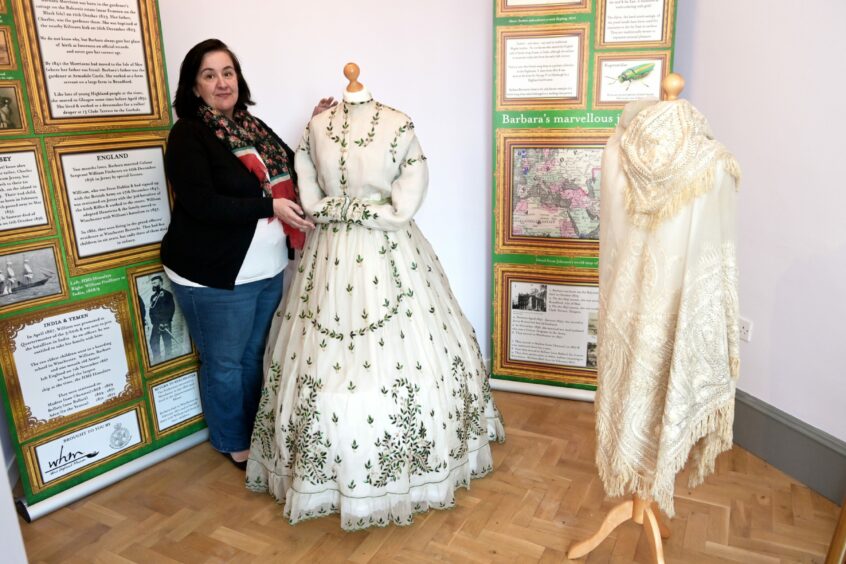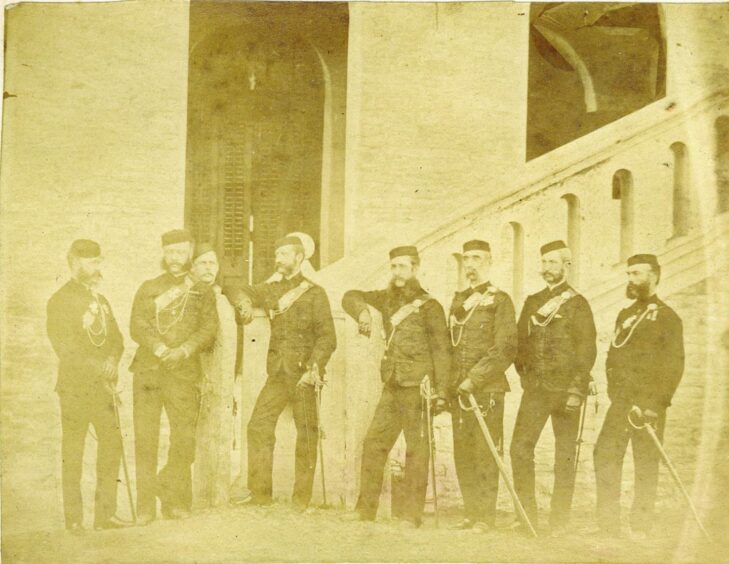She came from humble circumstances in Skye – but, by marrying well, she was able to grace the finest soirees in colonial India.
For that you need appropriate attire, and for former farm servant Barbara Morrison this meant a highly-prized, ultrafashionable beetle wing dress.
Her stunning gown, currently on show at the West Highland Museum in Fort William, is a rare survivor, and has made history as the only known example of a beetle wing dress belonging to a working-class person.
And yes, they really are beetle wings- or wing casings to be more precise.
The iridescent tones of jewel beetles –buprestidae- have been prized by creators for centuries, used for decoration and in jewellery and painting from South America to India and Myanmar.
When Victorian ladies arrived in India in the age of empire, they appropriated the glittering art form into their gowns.
The heat and dust of their surroundings made light cotton muslin the go-to fabric for recreating the high fashion of home.
The vibrant green elytra, as the wings casings are known, stood out to breathtaking effect on the diaphanous white fabric.
Beetle-wing embroidery had been used all over India in the Mughal era (1526-1857), reaching new heights in the Jaipur court, where it was put on garments for all genders and ages, integrated into already rich, colourful designs, and often cut into tiny sequins.
The earliest form of beetle wings used in Western clothing date from the late 18th Century when they were embroidered with gold thread onto linen shoes for ladies and exported from India.
At first, British ladies in India wore elytra less conspicuously, in the borders of their dresses, but by Barbara Morrison’s time, the main boast was how many elytra were used in their gowns – in many cases, thousands.
Fortunately no beetles were harmed in the making of these costumes, as the adult jewel beetle lives for up to three weeks, and the elytra are harvested after they die.
At a fancy dress ball in Birmingham in 1840, the three Home sisters of Hatherley Place, Cheltenham, must have caused quite a stir when all of them arrived in Indian beetle-wing dresses.
The fad went on during the first two decades of the 20th Century. In 1906, Mrs Sam Edwards, wife of the American actor famous for his role in Little House on the Prairie, was sent a beetle-wing dress by an Indian Rajah in recognition of services done him by her husband, reported the Birmingham Mail.
“Fifteen thousand wing cases of an Indian beetle are sewn upon the material and lent a green shimmering radiance to its folds.
“There have been many attempts to duplicate it, but it has been found impossible owing to the rareness of the beetles and the difficulties of affixing the delicate wing cases to the material.”
The paper estimated the dress’s value to be around £30,000.
Actress Ellen Terry also wore an extraordinary beetle wing dress in her role as Lady Macbeth.
Barbara Morrison must have felt well pleased with the progress of her life as she donned her own beetle wing dress as the wife of Captain William Fitzhenry of the 3rd Battalion/60th Rifles.
Born in Evanton
Barbara always claimed she was born in Inverness, although it was in fact in the Black Isle village of Evanton, and she was always vague about her age, although we know she was born in October 1823, baptised in Kiltearn Kirk on December 26 of that year.
The next we hear of her is the 1841 census when she was working as a farm servant on a large farm in Broadford, Skye.
Her father was from Skye and worked as a gardener at Armadale Castle.
Ten years later, Barbara is to be found working as a dressmaker for a tailor/draper at 13 Clyde Terrace in the Gorbals of Glasgow.
The move to Glasgow opened the doors of social advancement to Barbara.
She met tailor Charles le Sauteur and followed him to his native home of Jersey where the pair married and by 1853 had their first daughter Elizabeth.
She was followed by Henrietta in 1955.
Sadly Elizabeth died in 1855, followed by Charles, of pneumonia, in October 1856.
Not one to waste time, Barbara married Colour Sergeant William Fitzhenry in Jersey by special license two months later.
He was from Dublin, and joined the British Army in 1847.
At this point he was stationed on Jersey with 3rd battalion of 60th Rifles and worked in the stores.
William adopted Henrietta and they moved to Winchester with William’s battalion in 1857.
1861 saw the family living in grand officers’ residence at Winchester Barracks, and having grown considerably.
The couple had five children in six years, but lost three in infancy.
In April 1867 William was promoted to Quartermaster of 3/60th and was sent to join a battalion in India.
As an officer he was entitled to take his family with him, so Captain Fitzhenry, his wife Barbara and one-month old Annie set sail that November aboard the SS Himalaya, leaving the two eldest children at boarding school in Winchester.
Four years of colonial life followed, one in Madras(Chennai), two in Bellary (Ballari) and one in Aden (Yemen).
Scott historian Jo Watson was inspired to research the beetle-wing dress and its owner when she saw it at the West Highland Museum in Fort William.
She has concluded the dress was made around 1868-9 due to the style of bodice and skirt.
She said: “The third battalion served in Madras during 1868 to 1869.
“The style of the zardozi (metal) embroidery on the dress also hints that it was most likely made there as well; the way the silk threads are wrapped with silver wire is something that was quite particular to the Madras area at the time.”
There are no records of what the dress would have cost, or who made it, but as Barbara at this point had a retinue of ten servants and was considered a ‘lady’, it’s not likely she would have made it herself despite her own dress making skills, Jo says.
“Zardosi embroiderers were men and children working in sweatshop conditions,” she added.
The dress was handed down to the family member who eventually donated it to the museum, Tanya Stewart-Davies.
She made some alterations to it and wore it to a fancy dress party in the 1960s, a hundred years after it first graced her great-grandmother.
